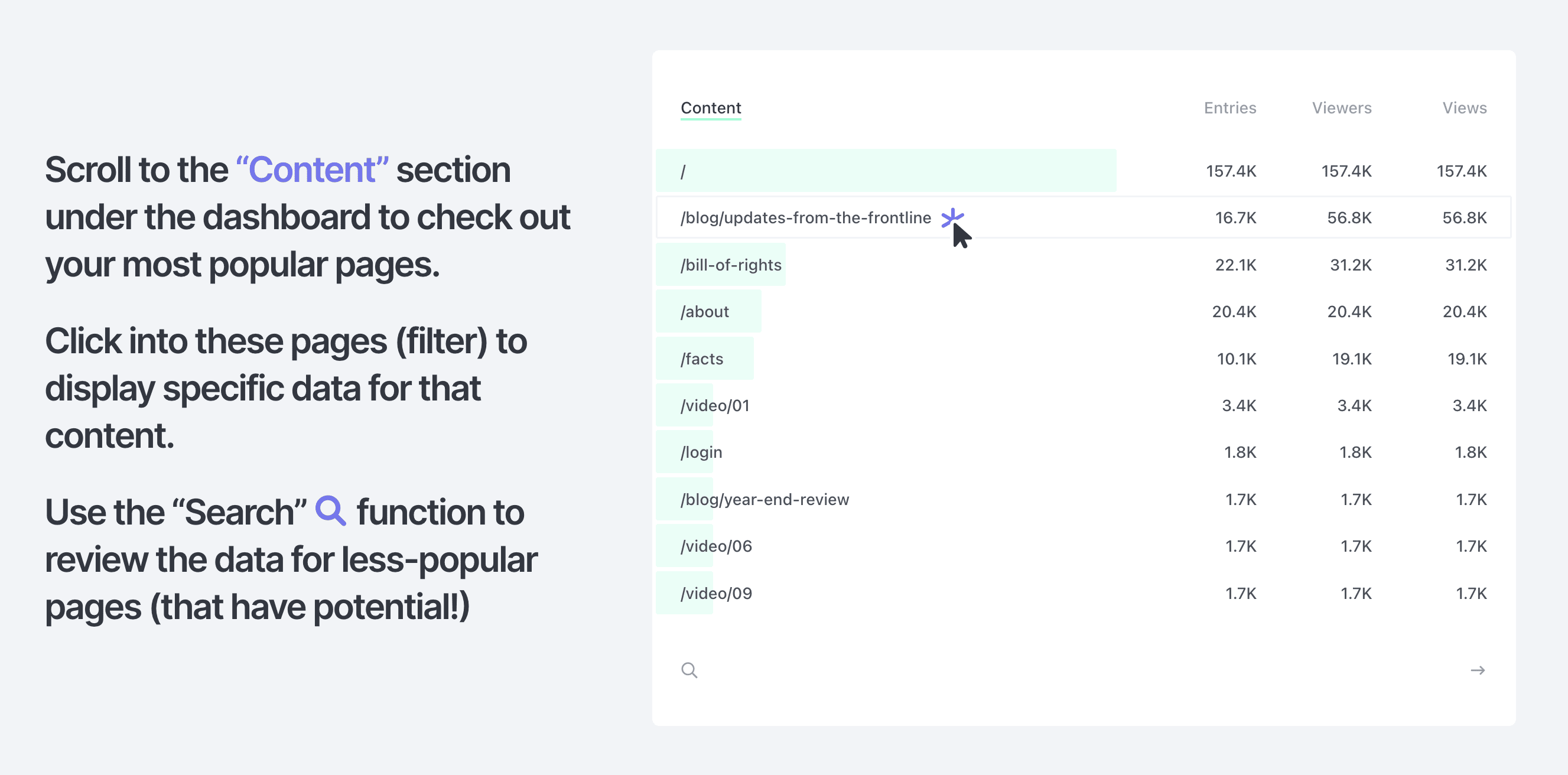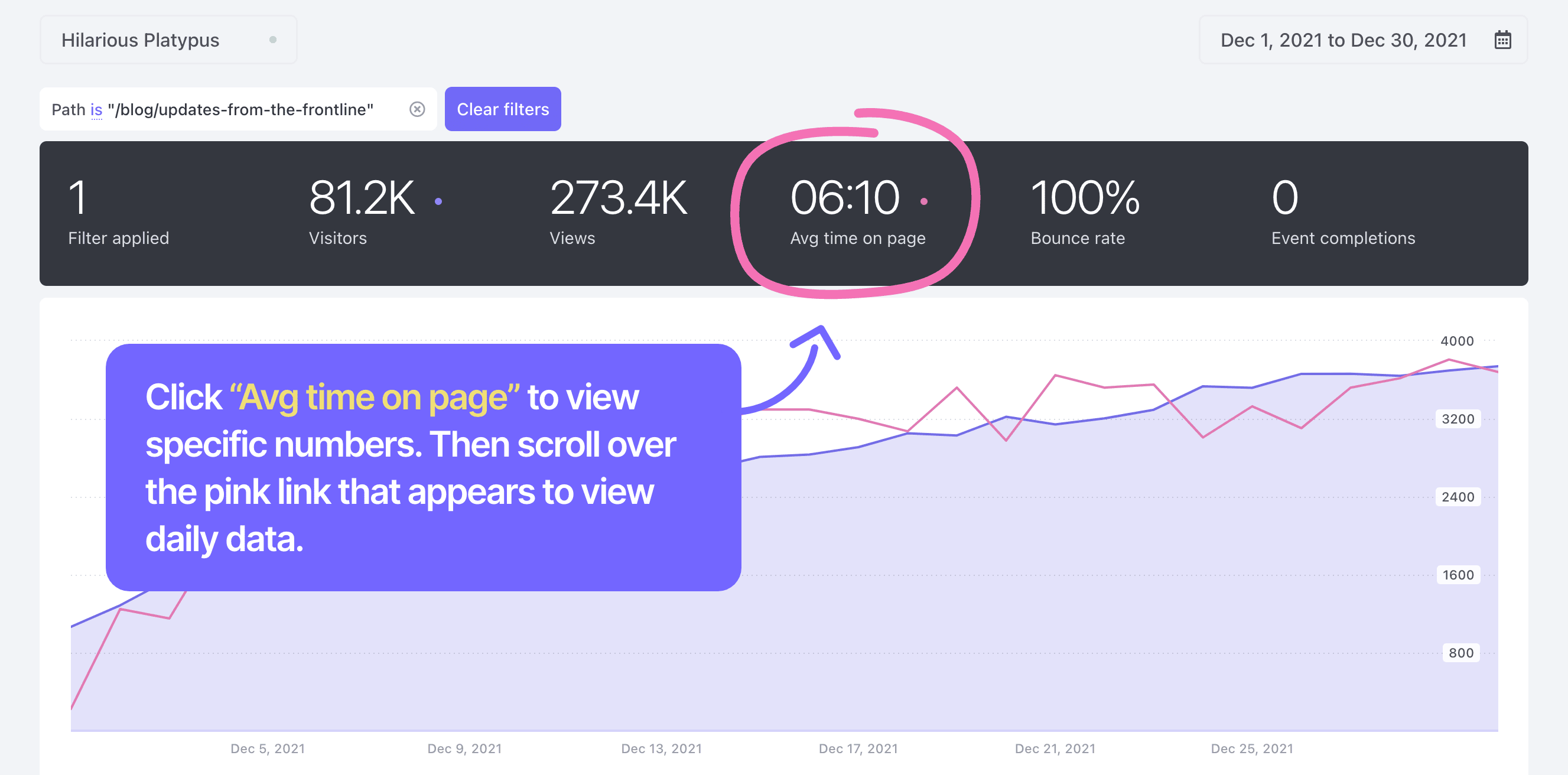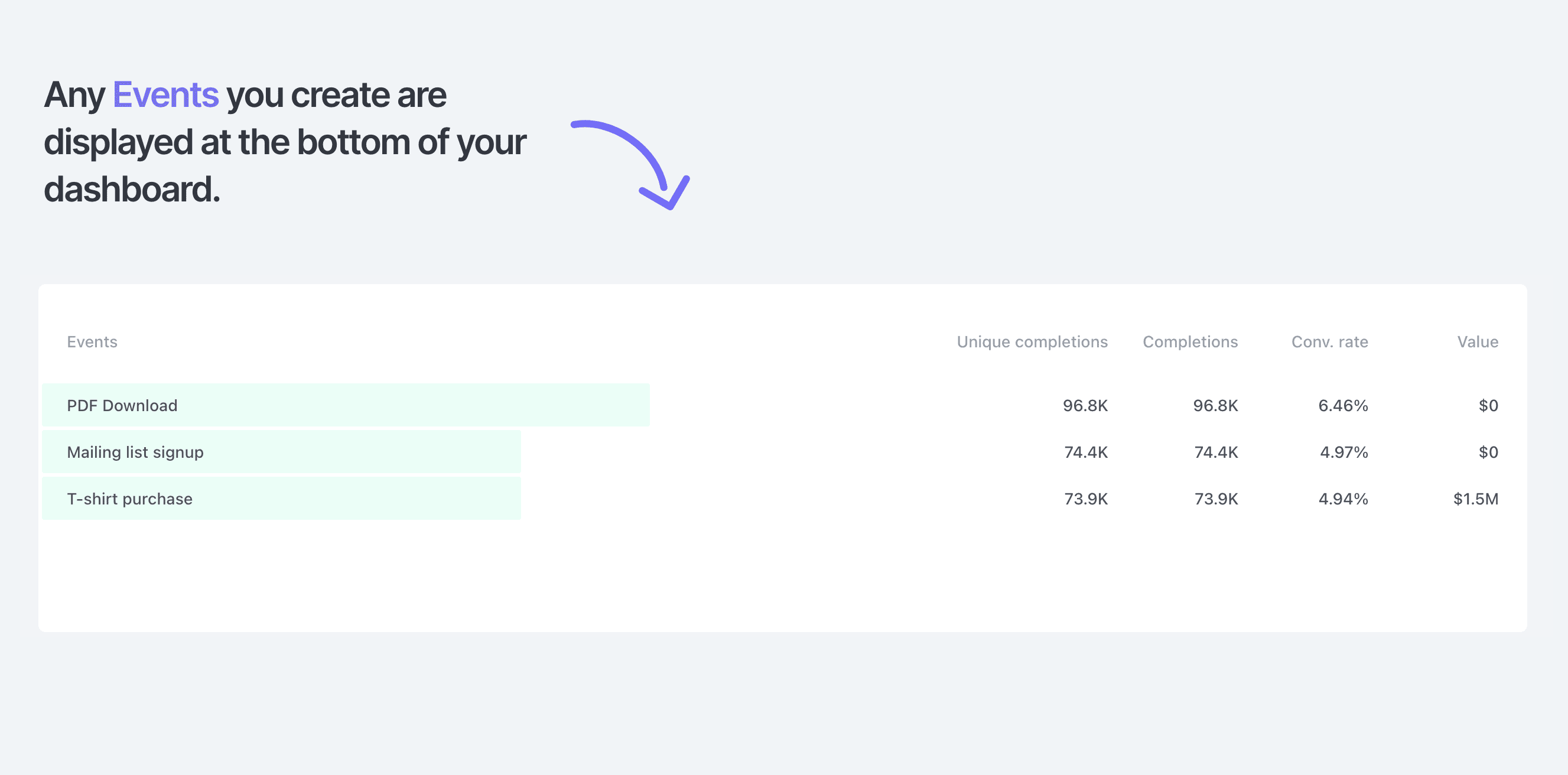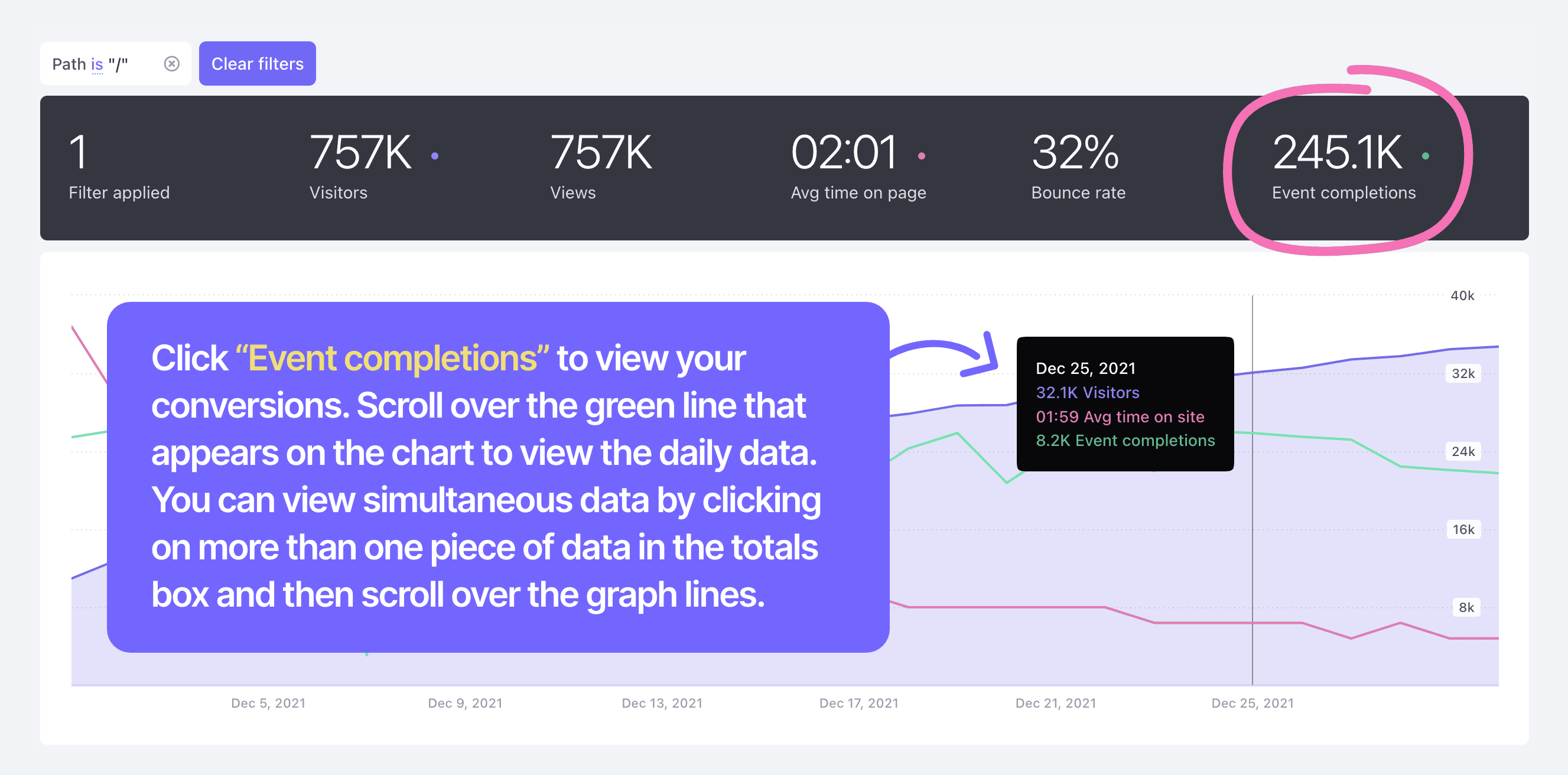How to use analytics to upgrade your content (and distribute it where it gets noticed)
Claire Emerson · Nov 15, 2022Meet Monica.
She’s been creating content for her growing web design agency for over five years now. And is at the point where she wants to be more strategic about the content she develops.
Not only is she feeling a bit burnt out after writing and producing all these years, but she’s also wary of the fact that she’s probably not doing as much with the content she has already created — to drive better business results.
Monica’s problem is that she’s not confident her marketing work contributes to her most significant business goals.
And what she doesn’t want to do is keep creating content just for the sake of it.
Instead, she’s decided to dig into the data to see where she can direct her energy and attention — so that it has the most impact on getting the outcomes she wants.
Data = Better Direction and Quicker Decisions
If you’re anything like Monica, you might be wondering how to use your website analytics to make smarter decisions about where you should focus your content marketing efforts.
And the good thing is, this doesn’t have to be complicated.
What we’re focused on at Fathom (other than promoting privacy and untangling from the tyranny of Google) — is simplification.
Because just like your website traffic, when it comes to your analytics — it’s the quality, not the quantity, of the data that matters.
More data is not what you need.
But gaining meaningful feedback into what your audience wants more (or less) of — without needing a degree in analytics to decipher what it all means — is where a superior strategy can take shape.
This means:
- Getting enough information to digest and take action without it being overwhelming.
- Gaining quick insights that paint an accurate picture of who’s visiting your site (and how long they’re hanging around), and
- Having easy access to viewing where that traffic is coming from so you can double-down on those channels.
Today, our goal is to walk you through how to do this using Fathom. And offer some next steps for using that data to drive better business results.
But before we get to that — it’s worth asking yourself a few critical questions first.
Asking why then what and how
“Possibly the biggest problem in our field right now: marketing work that's not tied to business goals. Ask why. Why am I writing blog posts? Why am I trying to rank for keywords? Why am I optimizing the email signup flow? Congruity is crucial.” — Rand Fishkin.
Getting more traffic that never converts is not contributing to your bottom line.
So it pays to understand why you’re doing what you’re doing — so that you can evaluate what’s worth continuing.
Before getting into “what” you can do to upgrade your content marketing strategy and “how” you plan on executing it, ask yourself a few questions about the content you’ve got in the pipeline (or have previously published):
- Does this serve my goals?
- Does it serve the goals of my audience?
- Does it serve the sources of influence who can reach my audience?
Once you uncover your driving reasons for creating content, you’ll be able to formulate a better plan for using the data to produce a more brilliant content strategy.
Forget the full content audit. Focus on these three things first
Do you know what task you don’t need to take on every month? A full-blown site audit.
And thankfully, with the help of our simple analytics insights — you don’t have to.
Because the best content to look at for developing new stuff, repurposing what you’ve previously published, or figuring out where to focus your distribution — is what your audience is already spending their attention on.
In Monica’s case, she’s incredibly interested in:
- Which of her articles are most popular so she can write more of that type,
- Where her site visitors are spending the most time, so she can do more with those pages, and
- Who her top referral sources are so she can figure out where to focus her distribution and promotion
Turning content trends into actionable tasks and projects
Having surveyed our Fathom users about how they use their analytics — it’s clear that they check their data (a lot), but often don’t know how to take action.
So today we want to dig a little deeper into how to turn the numbers into notable improvements for your site.
Let’s take a quick look at how you can gather important data from your analytics dashboard, and then we’ll dig into some of the key questions to ask so you can build out the “how-to” of your content strategy.
What content is bringing in the most traffic?
This content is likely the most shareable and captures your audience’s attention with its headline alone.
It’s also probably the content that speaks the most to your “second customer” — the person who might not be whipping out their credit card to pay for your product but helps you build your business by connecting you with the people who will. They’re the ones sharing your content on Twitter, curating your articles in their weekly newsletter, and reviewing your stuff on Youtube.
Using the insights from your analytic dashboard, you can dig into which sites are sending traffic your way. And that information can help you decide who to reach out to for partnerships. As well as show where to focus your distribution and promotion in the future.
Fathom makes this super simple by showing you your most popular pages directly below the graph on your dashboard.
Select the “All Time” date range (top right) and look at the Pages view to see your highest-traffic pages. Then click on the URL to filter the data by that page. Of course, if you want to check what was most popular in the last 6-months — you can amend the date range to reflect that.

What pages prompt the most time on-site?
The content with a high average for “time on page” is the most engaging for your site visitors. They’re so interested in what you’re writing about that they havent even bothered to click back to that open YouTube tab or scroll back onto their Twitter feed.
You’re likely hitting some crucial pain points, addressing how to execute their jobs to be done, or helping them feel one step closer to achieving their goals.
Doubling down on these topics, building out pillar pieces, supporting articles, and considering content upgrade options for these pages is a great strategy.
And if you’ve found some high-traffic pages that aren’t causing your visitors to stick around — think about how you can make the page more potent or what you can add to get them to convert (securing their email is a low-pressure first step which we’ll talk more about shortly.)
When you drill into your most popular pages (to filter the data you see), you can check how long your visitors are spending on that page by clicking “Avg time on page.”

What articles lead to your audience taking the next step?
If you’ve laid the groundwork by setting up some events in your Fathom, then using your results from the above two searches — you can check to see whether the pages that are the most popular and most engaging are actually causing customers to take the next step.
This could be via an email opt-in, a product purchase, filling out a contact form, or starting a free trial.
If the content is leading to the next step, great! If it’s not, consider what call to action might work best for the reader by considering these questions:
- Where are they in their customer journey?
- What else would they like to know based on what they’ve just consumed?
- What is the most effective way to deliver them to the next destination?
To check how your events are performing, you can scroll to the bottom of your dashboard homepage.

To see how well your most popular pages convert to events — check your event completions and even filter by events. You can also add additional views to the graph (like time on site and visitor numbers) by clicking on any other data headings.

Four options for developing new (and existing) content
Once you’ve pulled and analyzed your data, the next step is to think about how you can use it to drive results that align with your business goals.
The questions to ask here are:
- How can you repurpose or refine your best-performing content (remembering that performance correlates more with conversions rather than the number of site visitors)?
- How can you increase conversations on your most popular posts and pages?
- How can you distribute the content you have to get noticed and shared by a similar audience?
Using these insights will help you shape projects that will support your business goals and serve your audience.
Here are four of our favourite ways to transform your data into new content projects:
1. Creating content upgrades to increase conversions
A new visitor to your website is rarely ready to buy from you straight away. Either they don’t know, like, or trust you yet. Or they’re simply not in-market for your solution.
But all hope is not lost.
Because instead of expecting an unlikely engagement measure (like a product purchase or getting someone on a call or demo) — you can offer a more passive call to action. And yes, I’m talking about the humble email opt-in.
A content upgrade is something that will stop your audience from scrolling and cause them to act (without having to think too hard about what they’re getting themselves into). You offer something that addresses a need, solves a pain point, or will help them hit a goal faster or easier than if they tried on their own.
And all you’re asking for in return is their email. So you can send them the goods, and gain permission to keep in touch with them in the future.
To create a valuable content upgrade, apply the acronym SAGE to keep your incentive:
S – Short
A – Actionable
G – Goal-Oriented
E – Easy to implement
Researching your audience thoroughly and understanding their needs is critical for creating content upgrades that convert.
2. Crafting pillar pieces of content to build authority
A “pillar piece” of content positions your business as a go-to resource on your topic. It provides massive value for your readers and naturally draws them in with how interesting, rewarding, and applicable it is for their current situation.
Traditionally, pillar (or cornerstone) content has a high word count, is incredibly well researched, addresses your audience’s deep needs and wants, and screams “excellence.”
“The first goal of cornerstone content is usefulness and relevancy to the website visitor, no matter how they arrive. The second goal is to make that content so compelling and comprehensive that people are willing — no, make that excited — to link to it.” — Brian Clark.
Given how in-depth and comprehensive this kind of content is — it’s going to prompt:
- longer time spent on your site,
- a decrease in bounce rate,
- more people sharing and linking to your work,
- high search engine ranking, and
- unlimited (evergreen) traffic to your site.
3. Periodically refreshing high-performing or high-potential content
When deciding what content to refresh, content strategist Brittany Berger (from WorkBrighter.co) suggests focusing on these two categories first:
“Greatest but not latest hits,” which are your older pieces of content that are still highly relevant both to your audience and your business strategy.
“Hidden gems,” or content that is high quality and aligned with your business strategy but never took off with your audience or got the results you’d expected.
Once you’ve identified the pieces worthy of your time, energy, and attention — think about both the informational and strategic gaps you can fill. To make the content more informative, engaging, and higher performing.
4. Repurposing popular and high-value content (a.ka. decentralized distribution)
As one of my favourite Twitter follows, Ross Simmonds, says:
“Pressing publish is never the last step.”
Distribution isn’t tricky; it’s just often overlooked. I know I’ve been remiss in spending as much time sharing and promoting my work as I spend on writing it.
But with a clear system, you can make a habit of repurposing your best content and tailoring it to the platforms that are sending traffic your way.
To effectively repurpose your content and distribute it where it will get noticed — use your data to drill into your direct referrers, and see where your work is getting the most traction. Then, create a repeatable system for maximizing that traffic source.
For example:
If it’s Facebook…
- Use Facebook advertising to distribute the content to a broader audience than your page would likely reach.
- Join Facebook groups and share the content you’ve developed in them as soon as it’s published.
- Share and @Mention any brands referenced in the piece.
If it’s Twitter…
- Share the key points as a thread on Twitter, link to the piece, and mention any influencers you included in the content.
- Retweet posts from users sharing your content on their own Twitter accounts.
- Send direct messages to a few of your followers, letting them know you just wrote a post they might be interested in. Include a link to the tweet.
If it’s LinkedIn…
- Write a blog post on LinkedIn that drives readers back to your content.
- Create a long-form status update about the article with a link in the comments.
- Comment on status updates shared on Linkedin with a link to the asset.
If it’s Instagram…
- Share a post on Instagram that tells your followers to click the link in your bio (make it link to your content)
- Share on your Story with a swipe-up link and send it via DM to any followers who have recently engaged with your content.
- Create a series of videos in your story with a CTA to check the link in your bio.
Want more distribution and repurposing ideas? The peeps at Foundation Marketing share 100+ Content Distribution ideas in this checklist (which is an excellent content upgrade, by the way). Make a habit of reviewing data to decide what to work on next Each month, check your dashboard insights and use them to guide your decisions about what content projects to prioritize next.
And don’t forget that:
- Knowing “why” you’re putting your time and energy into a piece of content will help you align it better with your business goals.
- Repurposing or republishing past content is often a better strategy than starting a new piece from scratch, and
- Distributing your content outside of your site gives your best work a better chance of getting noticed.
Using your data (not just viewing it) will help you direct your marketing efforts where they will make the most impact. And drive results that reflect your most relevant business goals.
BIO
Claire Emerson is a writer